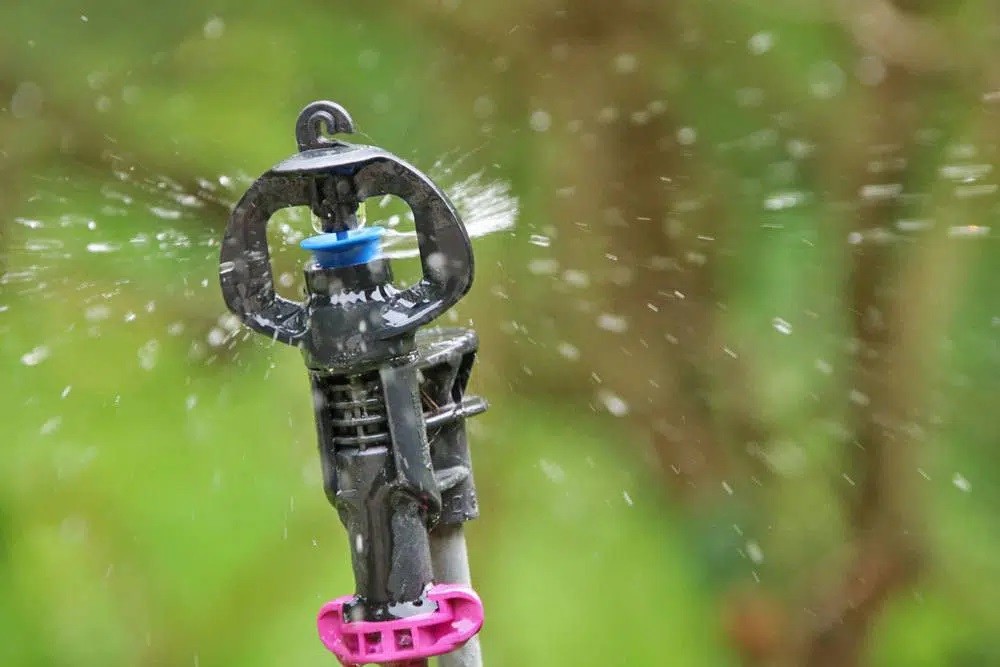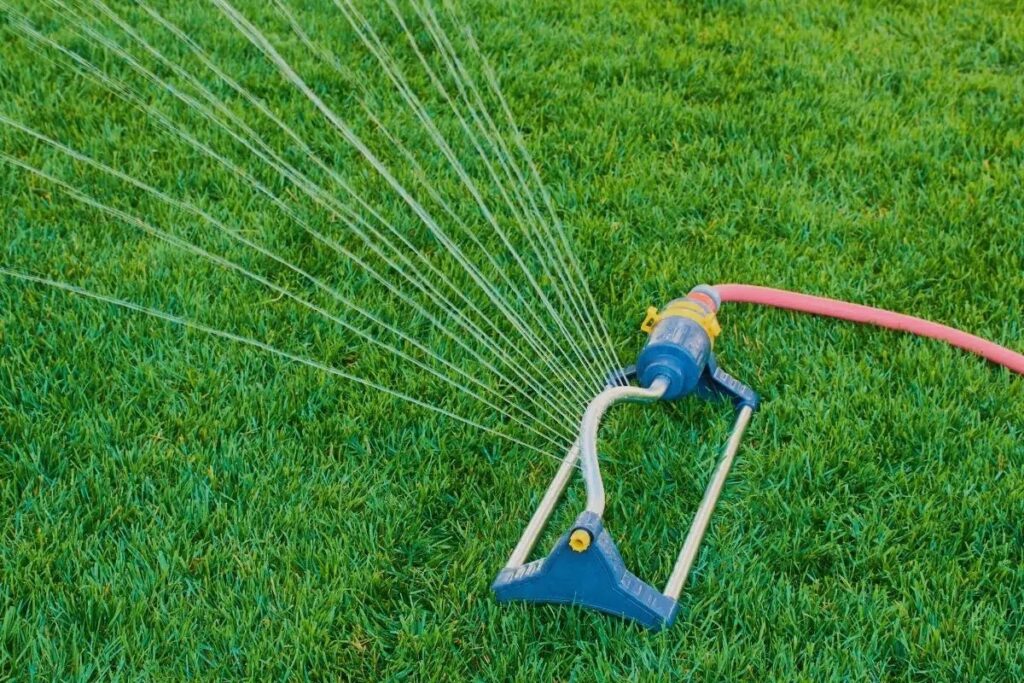After you have laid new sod, watering is essential. In order for the turf to grow effectively, the frequency and amount of watering must be correct.
- new sod is watered after laying in the evening of the same day
- watering in the following 14 to 21 days depending on weather conditions
- check soil for moisture daily
- apply quantities of water according to the temperature of the day
Contents
First watering: timing
With a new sod, the timing of the first watering is one of the most important maintenance measures of all. With this you guarantee that the grasses do not dry out immediately, which would otherwise make it impossible to grow. For this reason, the sod is watered on the same day after laying. But wait until the evening, because it can be problematic if they water in the morning or at noon:
- Watering water evaporates faster
- Turf dries out faster
- Water on blades can cause burns
Above all, you should avoid the burns, because they can be quite a pain for a new turf. In the evening, on the other hand, the water can effectively seep away and be absorbed by the turf, even if it is very hot. This gives the new lawn the perfect start.
Tip: If it’s very hot, you can even water the sod as you lay it. This will prevent the turf from accidentally drying out.
Frequency
Success after laying the sod depends not only on the first watering. You will need to water the new sod continuously for a period of two to three weeks thereafter to allow the grasses to become established in the garden. How often you water depends entirely on the weather. For example, you will need to water the new sod less if it rains regularly in the period after installation. To determine when to water, proceed as follows:

- Select metal tool
- Minimum length: 7 centimeters
- e.g. wrench or screwdriver
- insert into the lawn
- pull out again
- check for moisture
The first 7 centimeters of the soil of the newly laid sod must be permanently moist during the growing phase. As soon as no moisture is visible on the tool, turn on the irrigation system. It is not uncommon that you will need to water two or three times a day over periods of low rainfall. After the two to three weeks, switch to a traditional watering schedule, such as once a week.
Note: If the blades of turfgrass don’t straighten up after use, you haven’t watered enough. Make up for it as soon as possible to prevent dry damage to the turf.
Correct amount of water
In order to water your new sod effectively, you need to pay attention to the amount of watering water. It doesn’t matter if you are watering smaller or larger areas with your irrigation system. The required amount of water is always determined per square meter. In Central Europe, the following amounts, which depend on the temperature, have become established:

- above 25°C: 25 liters per square meter
- 20°C to 25°C: 20 liters per square meter
- below 20°C: 15 liters per square meter
After the first two to three weeks, reduce the amount as the sod becomes established in the garden. The duration of watering can easily last two to three hours with these amounts of water.
Frequently asked questions
How can the exact amount of watering be determined?
A rain gauge is positioned at the edge of the area to be watered and measures how much rain has fallen during the day. This allows you to read whether you still need to top up watering. Likewise, you can use the rain gauge to determine how much time your system will take to irrigate. Alternatively, you can rely on a water meter.
Is it possible to overwater the sod?
In itself, it is difficult to overwater a new sod, as they use high amounts of water. Nevertheless, in the case of highly compacted soils, water may not be able to percolate. In this case, waterlogging often occurs, which negatively affects the growth of the lawn and promotes fungal diseases.
What water should be used for irrigation?
Ideally suited for lawns is the use of rainwater, as it is available free of charge and does not contain lime. Likewise, you can supply the turf with groundwater from a well, which is also a cheap alternative to tap water.

